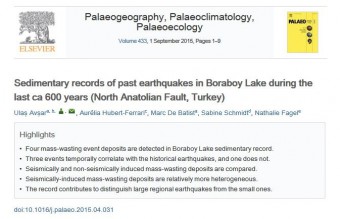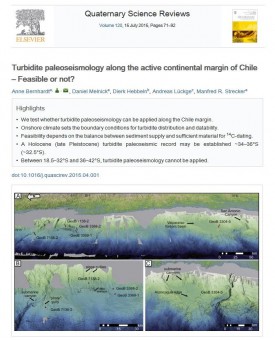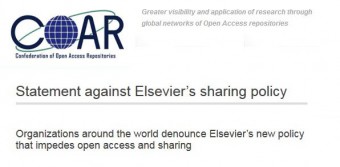There are articles to read, videos to watch and positions to be found: paleoseismology of Chilean turbidites, lake sediments investigated near the North Anatolian Fault, indoor footage of the Gorkha Earthquake and a discussion on Elsevier’s new sharing policies. Today is Friday and here are your links!
The Pacific Earthquake Engineering Research Center (affiliated with UC Berkeley) provides new indoor footage of the Gorkha Earthquake. The video was filmed in a server room on the 5th floor of a 7-floor reinforced building about 610 m away from a KATNIP/USGS seismometer station. You can nicely see the directional movements of the shelves as the seismic waves hit the site.
Two new articles on paleoseismology were published:
- Avşar et al. wrote about sedimentary earthquake records in lake sediments of Boraboy Lake close to the North Anatolian Fault – published in Palaeogeography, Palaeoclimatology, Palaeoecology.

Sedimentary records of past earthquakes in Boraboy Lake during the last ca 600 years (North Anatolian Fault, Turkey)
- Bernhardt et al. investigated the feasability of turbidite paleoseismology along the active continental margin of Chile – published in Quaternary Science Reviews.
The San Andreas movie hit the screens this week – and was wildly discussed among geoscientists. On earthmagazine.org, four geologists from Sweden now even defined what makes a geologist movie (a movie with a clearly identified geologist in the cast […] who must appear on screen) and provided a long list of movies with geologist characters in it. But even better, they investigated the “demographics” of movie geologists:

The roles, genders, moral characters and survival rates of movie geologists. The smaller bar charts further discriminate geologists’ survival rates according to their moral characters. Credit: K. Cantner, AGI, remade from Sturkell, Sjöqvist, Björklund, and Johnsson.
Speaking of Elsevier articles (like the ones linked obove), this global player in publishing announced new sharing policies that will not only affect future publications but also all the previously published articles in one of their journals. While Elsevier describe the new policies as unleashing the power of academic sharing, many organisations and libraries doubt that these policies are made in favour of authors, but rather lead to maximizing Elsevier’s revenue. The Confederation of Open Access Repositories (COAR) published a statement against Elsevier’s new policy and criticize the long embargo periods, the application of the policy to previously published articles and, if you read the comments below the statement, what Elsevier means by ‘self-archiving’. Over 100 libraries and institutions have singed this statement. Again, I would like to recommend reading the comments, since also the Director of Access & Policy, Dr Alicia Wise, states Elseviers view on the disputed points.
And here are some of my Twitter favourites:
Have a nice weekend!






No Comments
No comments yet.